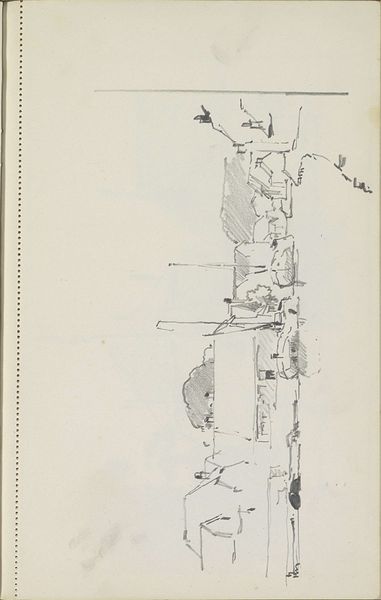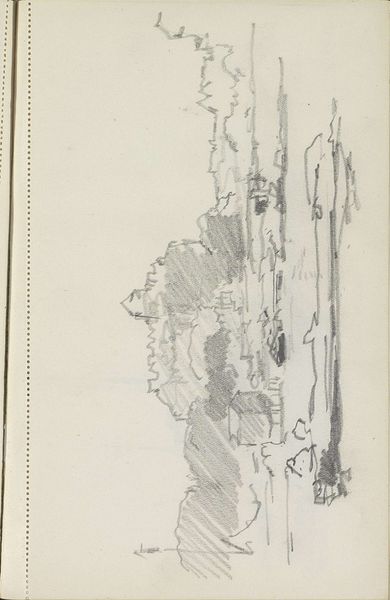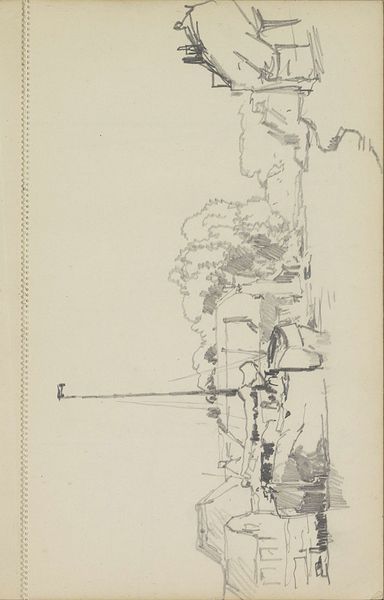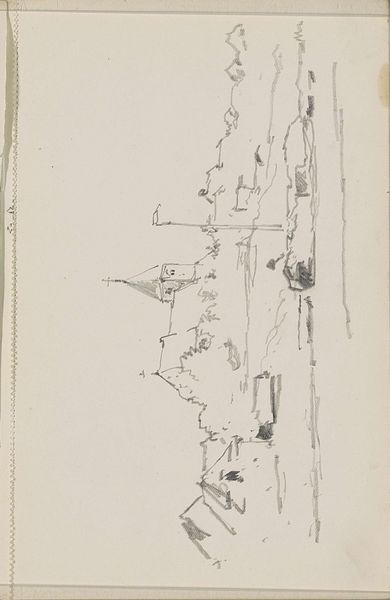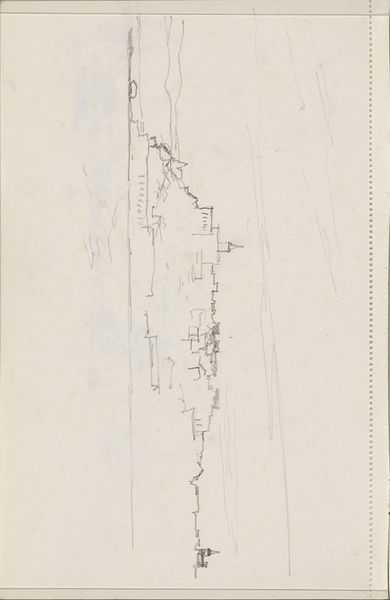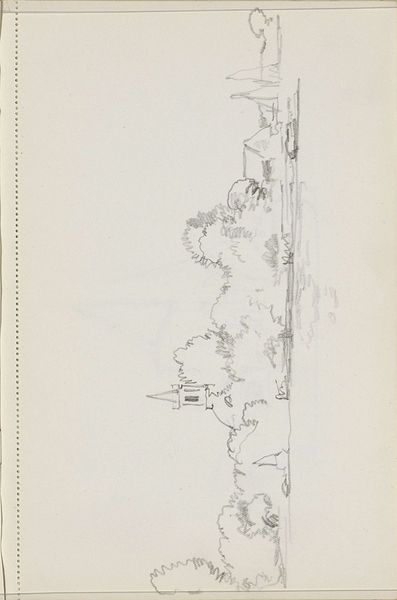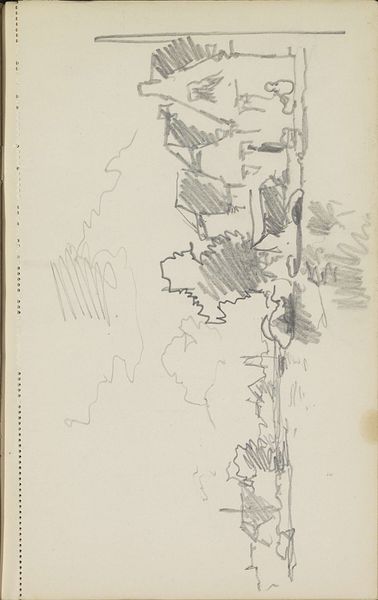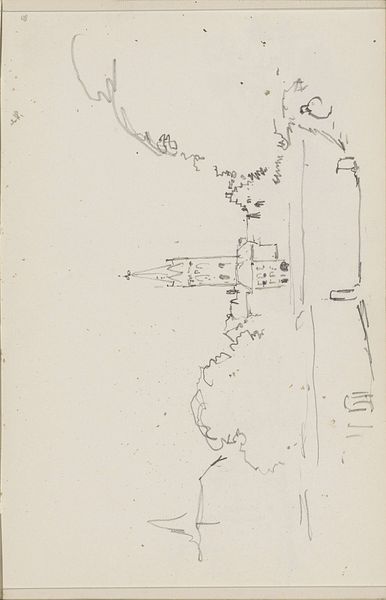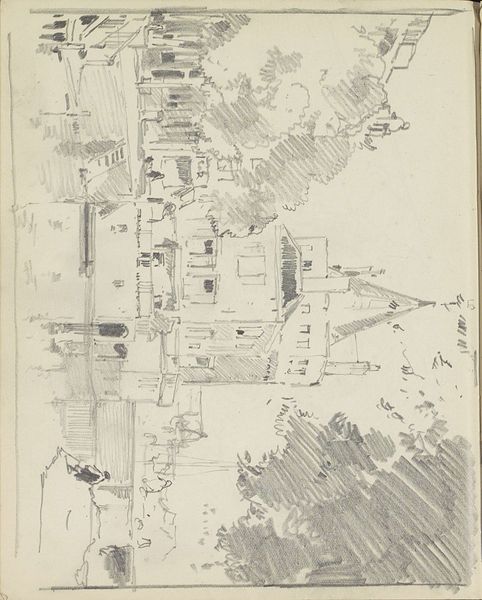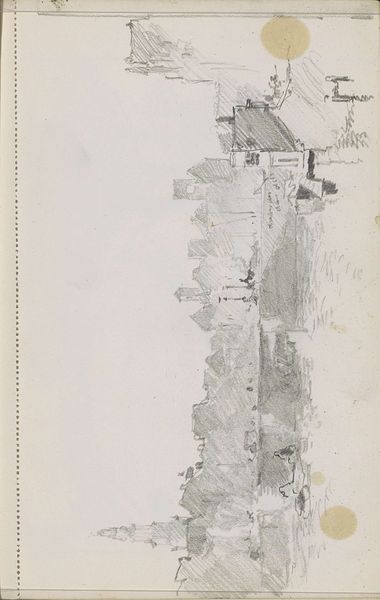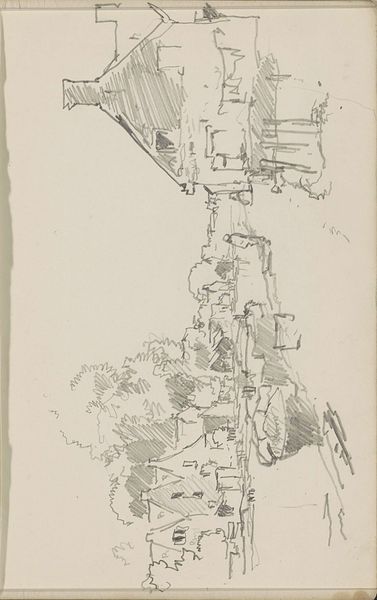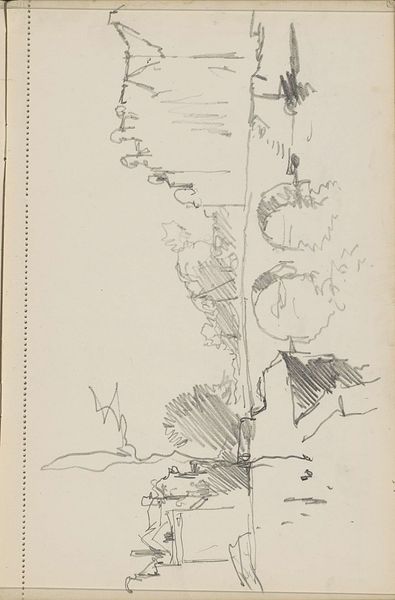
drawing, paper, ink
#
drawing
#
paper
#
ink
#
geometric
#
pen-ink sketch
#
orientalism
#
line
#
cityscape
Copyright: Rijks Museum: Open Domain
Curator: Here we have Cornelis Vreedenburgh's "Boulevard van een oosters dorp", dating from around 1936. It's a drawing in ink on paper, currently held here at the Rijksmuseum. Editor: My immediate impression is a quiet, almost desolate scene. The monochromatic palette and sparse linework give it a dreamlike quality, distant and perhaps… romanticized. Curator: The orientalist style evident here was, in the early 20th century, something of a trope among Western artists, drawn to what they perceived as the exotic nature of the East. Vreedenburgh, though Dutch, often depicted these kinds of imagined eastern landscapes. It’s important to note that these depictions are not always accurate representations, often reflecting Western ideals. Editor: Precisely. We must recognize that, while aesthetically interesting, "Orientalism" as a movement can be seen as reinforcing colonial power structures. This piece begs us to consider: Whose gaze are we seeing through? And what power dynamics are at play when representing “other” cultures? Curator: It’s a delicate balance. His technique is quite striking; he used lines in the geometric pattern to construct form and depth. Notice the careful linework around the palm tree and the buildings, which gives texture to an otherwise flat plane. This emphasizes the visual effect and brings a different kind of cultural insight on a smaller scale. Editor: Absolutely. The contrast between light and shadow, though minimal, creates a stark atmosphere, which arguably speaks to how “Eastern” places were regarded and considered – shrouded in a sort of mystery through a Western lens. But even just the technique; there's an evident artistry there. I agree about the dynamism, despite the obvious issues relating to power and otherness. Curator: I see that. It encourages us to ask probing questions about history and how it shapes these visual imprints. We hope our listeners engage critically with art and cultural heritage by connecting artistic expression, the artist's intentions, and historical events. Editor: Indeed, by bringing social and artistic concepts closer together we start dialogues. Now hopefully people will recognize art's critical value through its function of documentation and collective experience.
Comments
No comments
Be the first to comment and join the conversation on the ultimate creative platform.
